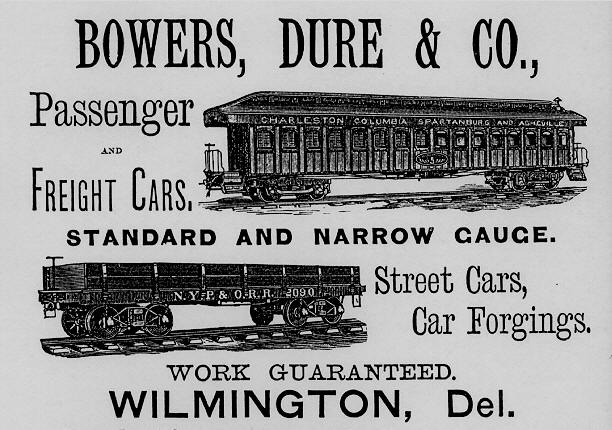Bowers, Dure & CompanyDure Car Manufacturing Company
|
 |
Bowers and Dure were probably encouraged by the existence in Wilmington of three other firms already engaged in the car-building industry: Jackson & Sharp (1863), Harlan & Hollingsworth (1836) and the Lobdell Car-Wheel Company (1836).
Bowers had been Master Car Builder of the PW&B Railroad for 20 years, and may have been employed there before then, because in 1871 he testified in a patent suit by Pullman that the PW&B Railroad had rebuilt two Imlay sleeping cars into day coaches in 1844. He apparently was of some prominence, having served on the Boards of Directors of several Wilmington banks.
Dure was a well-known architect and local builder, who had built—among other things—the Wilmington Institute Library, the West Presbyterian Church and the Delaware Avenue Baptist Church. Before the Civil War he had been in the carriage-building business.
During its short lifetime, Bowers, Dure & Co. produced horse street cars, coaches for New York’s elevated railroads, and rolling stock for steam railroads.
 |
|
New York, New Haven & Hartford coach #274, built by Bowers 1881. |
Bowers retired in the early 1880s, and the firm became Dure Car Manufacturing Company. Dure began to specialize in manufacturing for the Pullmans Palace Car Company, and in August of 1886 sold the works to them for $55,000 (almost $1.1 million in today’s buying power).
Pullman would use the works as their eastern branch repair facility. And who did they name as Superintendent of the newly acquired facility? None other than Thomas W. Bowers.
The former Bowers, Dure works was still in operation for Pullman at least as late as 1957.